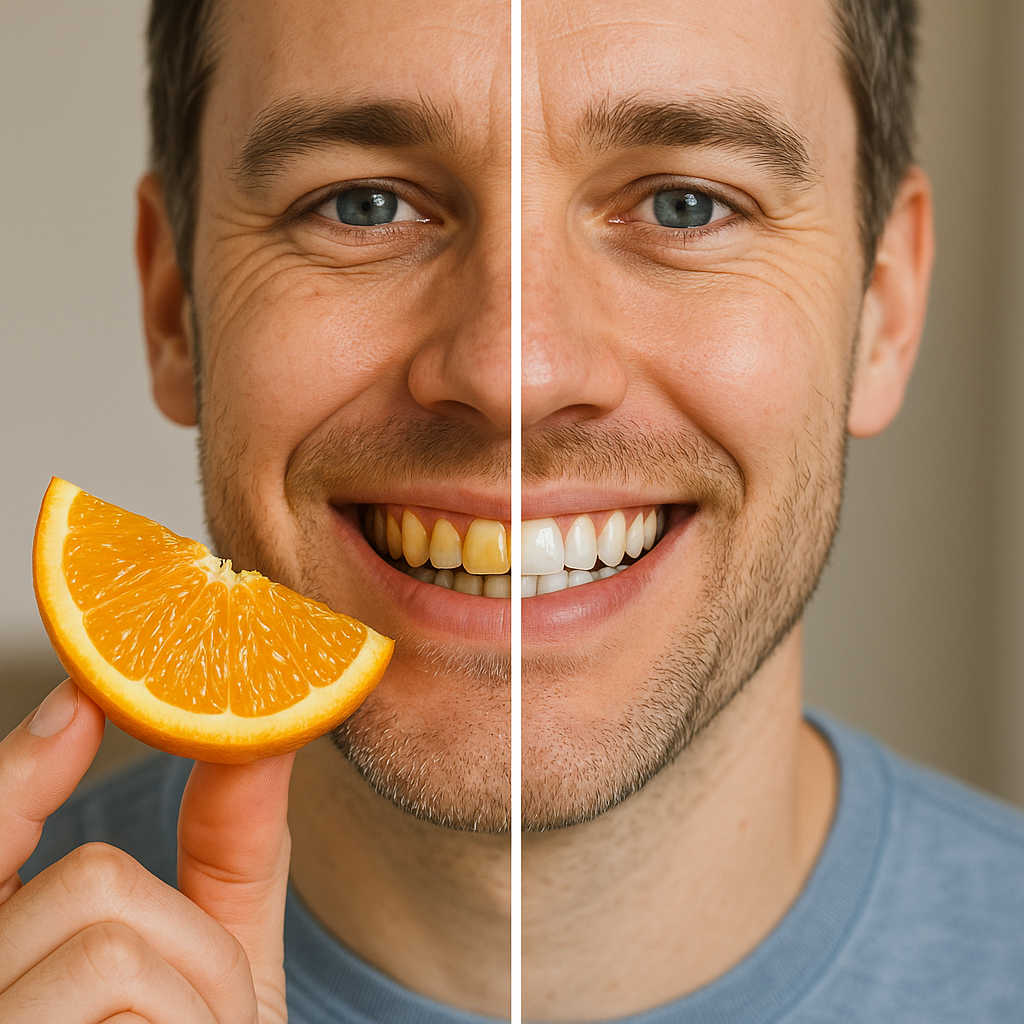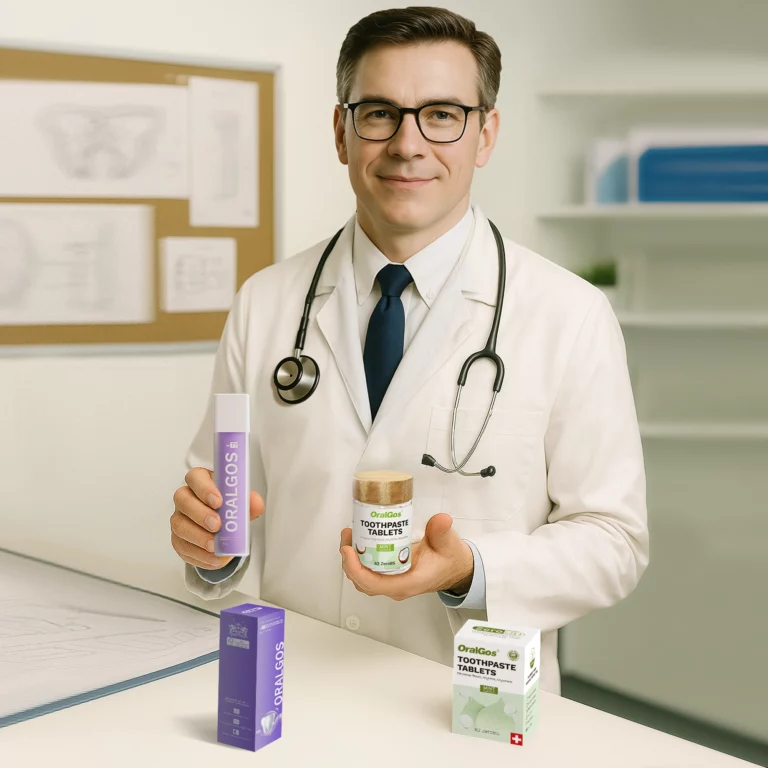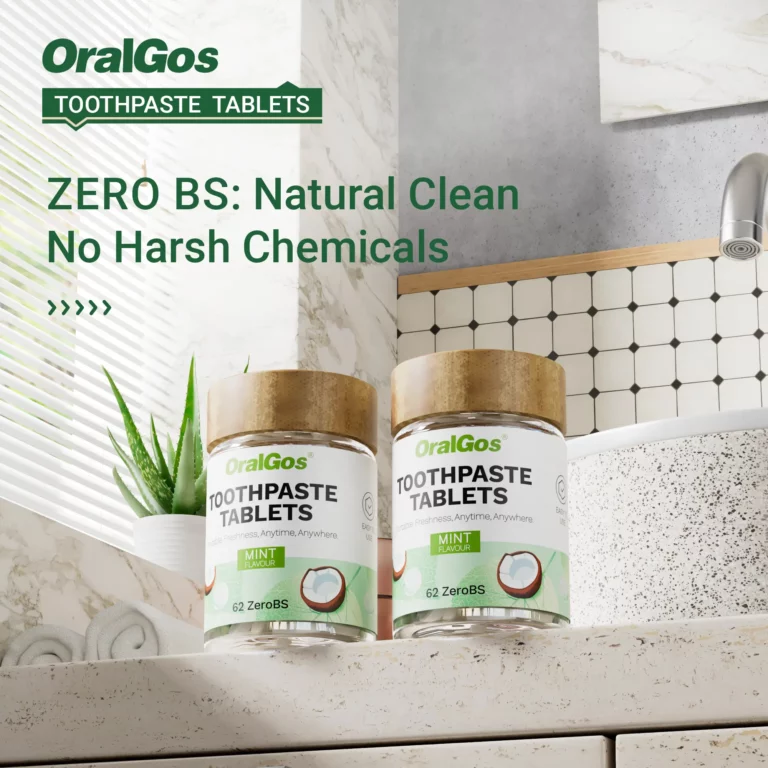Oranges are often celebrated for their high vitamin C content and refreshing taste. However, when it comes to orange juice and enamel, the relationship is less sweet. Acid erosion caused by citrus fruits has become a growing concern for oral health professionals and dental product manufacturers alike. Could this seemingly innocent fruit be contributing to long-term enamel damage in your customers?
1. How Do Oranges Impact Oral Health?
While oranges support immune health and gum integrity thanks to their vitamin C, they also contain citric acid and natural sugars—two key culprits in tooth enamel erosion.
Citric acid lowers the oral pH, weakening the enamel structure and leaving teeth vulnerable to abrasion and bacterial attack. Once enamel begins to erode, patients may experience tooth sensitivity, dullness, and a higher risk of decay. The natural sugars further feed plaque-causing bacteria, accelerating demineralization.

2. Is Orange Juice Worse Than Whole Oranges?
Yes—and significantly so. Orange juice, especially store-bought versions, concentrates acid and sugar while stripping away fiber, which might otherwise slow sugar absorption and neutralize acids.
Research shows that regular consumption of orange juice can reduce enamel hardness by up to 84%. Some commercial juices even contain added sweeteners, exacerbating the risks. For patients or consumers who insist on juice, advise them to drink it quickly (not sip it throughout the day) and follow up with a water rinse.
3. Are Oranges Too Acidic for Teeth?
Oranges typically range between 3.7 to 4.3 on the pH scale—well within the acidic zone. While less aggressive than lemons or limes, their acidity is still strong enough to soften enamel.
Frequent or prolonged citrus exposure—such as grazing on orange slices over time—extends acid attacks and compromises enamel. It’s better to consume the fruit in a single sitting and wait 30 minutes before brushing to allow saliva to naturally buffer and remineralize the enamel surface.
4. Do Oranges Contribute to Tooth Decay?
Although oranges aren’t inherently harmful, they can create the perfect environment for decay. Acid demineralizes the enamel, while sugar supports bacterial growth. Combined with inadequate brushing, this accelerates caries formation.
Whole oranges are still preferable to dried fruits or candy, but even natural sugars need to be addressed in routine oral hygiene recommendations.
5. Can Oranges Discolor Teeth?
Oranges don’t stain teeth the way red wine or coffee does, but they can indirectly dull a patient’s smile. As enamel thins due to acid erosion, the yellowish dentin layer beneath becomes more visible.
This creates a subtle, progressive discoloration—especially if oral hygiene is lacking or if patients frequently consume acidic beverages like citrus-infused sparkling waters.

6. How to Minimize or Remove Orange Stains
If patients notice dullness or minor discoloration from citrus consumption, suggest:
Nano-hydroxyapatite Toothpaste – Remineralizes enamel and polishes teeth gently.
Whitening Strips – Ideal for lifting surface-level fruit stains without harming enamel.
Professional Cleanings – Biannual visits help manage both tartar and discoloration.
Soft-Bristled Toothbrushes & Non-Abrasive Pastes – Maintain enamel integrity during daily brushing.
7. Should You Brush Right After Eating Oranges?
Absolutely not. Brushing immediately after citrus exposure can exacerbate enamel loss. Acid softens the enamel, and brushing in this vulnerable state can erode it further.
Instead, patients should rinse with water and wait 30–60 minutes before brushing. Encourage saliva production during this window to help neutralize acid—chewing sugar-free gum can assist.
8. How to Enjoy Oranges Without Harming Teeth
Dental professionals don’t need to discourage oranges entirely—just promote smarter habits:
Eat citrus during meals rather than as snacks.
Rinse with water immediately after eating.
Use straws for citrus beverages to reduce contact with enamel.
Pair with calcium-rich foods like cheese to neutralize acid.
Recommend toothpaste that strengthens enamel with ingredients like fluoride or hydroxyapatite.

9. Other Acidic Foods and Drinks to Watch
Oranges are just one piece of the puzzle. Many everyday foods and beverages also present acid-related challenges for dental health:
Lemons & Limes – Extremely acidic and harsh on enamel.
Soft Drinks & Energy Drinks – High in acid and sugar.
Kombucha & Vinegar-Based Beverages – Trendy, but highly erosive.
Dried Fruits – Sticky, sugary, and linger on tooth surfaces.
Sweetened Iced Tea – Combines staining tannins with decay-inducing sugar.
Help buyers and patients understand that “natural” doesn’t always mean “safe for teeth.”
10. Tooth-Friendly Citrus Alternatives
Looking to satisfy your customers’ cravings for something fruity without the dental risks? Recommend:
Pears – Low acidity, high fiber, and gentle on enamel.
Apples – Slightly acidic but rich in saliva-stimulating properties.
Berries – Contain less acid than citrus, with antioxidant benefits.
Cheese & Yogurt – Naturally high in calcium, helping protect teeth.
Raw Nuts – Non-acidic and effective at neutralizing oral pH.
These alternatives support oral wellness while still offering variety and nutrition.
11. Final Thoughts
Are oranges eating away your enamel? The short answer is: they can. But with proper care and informed choices, dental professionals can guide patients and B2B buyers toward safe, enjoyable citrus consumption.
Encourage rinsing instead of brushing right away, promote remineralizing toothpaste, and offer education on acidic food habits. For oral-care brands and manufacturers, this is a great opportunity to develop enamel-friendly products tailored to the modern diet.
With balanced guidance and innovative product solutions, we can continue to enjoy the health benefits of oranges—without sacrificing our smiles.





